Bread flour varies depending on the type, quality, and range of ingredients. The wide range of bread flour available can be confusing when deciding which one to buy. This article will review the best bread flour brand options and show you how to choose the most suitable one.
8 Best Bread Flours
1. Best All-Purpose Flour: Bob’s Red Mill Organic Unbleached White All-Purpose Flour
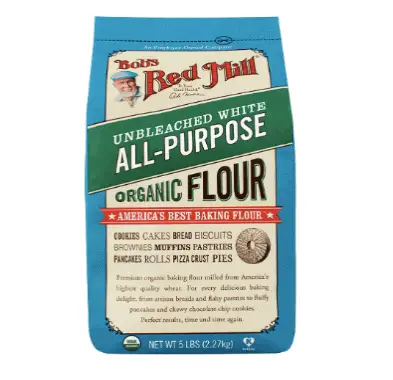
The Bob’s Red Mill Organic Unbleached White All-Purpose Flour is suitable for baking a wide range of recipes, including pizza dough, pasta, rolls, sandwich bread, baguettes, etc. It is also an excellent option for use with a bread machine.
The dough forms and rises easily as the flour has a high gluten protein content. It is Non-GMO, unbleached, and unbromated. Besides, it is organic.
It comes in high-quality packaging that is enforced with plastic to ensure safe delivery and airtight storage. However, Bob’s Red Mill Organic Unbleached White All-Purpose Flour is pricier than similar products. Another excellent choice of the best all-purpose flour that is more affordable is the Gold Medal All Purpose Flour, Unbleached.
2. Best Organic Flour: Great River Organic Milling Whole White Bread Flour

The Great River Organic Milling Whole White Bread Flour is one of the best whole wheat flours on the market. It is suitable for all your baking needs. Ranging from making noodles to baking bread, pizza crusts, pie crusts, pastries, and cakes. It makes a consistent dough and produces delicious bread with a pleasant texture and flavor. It also rises well and has optimal gluten development.
The flour is made from carefully selected organic hard red spring wheat. The wheat has small bran particles, which add volume and fiber to the flour. It has a 15-percent protein content for enhanced gluten development and health benefits. All the grains are USDA organic and kosher. The wheat flour does not contain any preservatives.
The organic whole grains are stone-ground with a granite millstone at cool temperatures to ensure that the flour has a natural flavor and retains its high protein content.
3. Best Bread Flour Brand for Whole Wheat Flour: King Arthur Stone Ground White Whole Wheat Flour

The King Arthur Stone Ground White Whole Wheat Flour is a healthier substitute for all-purpose white flour, yet lighter and milder flavor than other whole wheat flours. It is an unbleached flour milled from hard white winter wheat. White winter wheat is lighter and tastes than traditional red wheat flour. It is packed with fiber, nutrients, proteins, and vitamins.
4. Best Self-Rising Flour: White Lily Unbleached Self-Rising flour
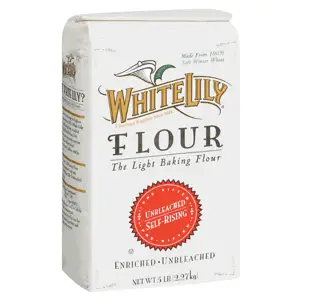
The White Lily Unbleached Self-Rising flour best suits quick bread, pizza crusts, and rolls. It is low in proteins—6%, which makes it light and easy to knead. It is made from 100% soft red winter wheat with a light texture and delicious taste. It is blended with leavening and salt to simplify your dough preparation process. It offers a high rise for tall, well-held-together bread.
5. Best Pastry Flour: Bob’s Red Mill Artisan Bread Flour
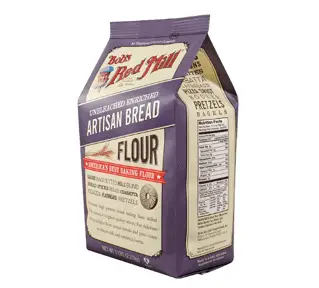
The Bob’s Red Mill Artisan Bread Flour is one of the best bread flours for a wide range of bread recipes, from artisan breads such as sourdough, rustic breads, flatbreads, and dinner rolls, to regular homemade bread. It is suitable for use by both professionals and home bakers.
The unbleached and unbromated wheat flour is mixed with malted barley flour, which adds a rich, sweet flavor. The flour has a high protein content—14%— for enhanced gluten development, suitable for heavier dough. It also enhances the dough’s ability to rise.
6. Best Bread Flour Brand for Bread Machine: White Lily Unbleached Bread Flour

The White Lily Unbleached Bread Flour is a high protein flour —11%—suitable for the bread machine. It has adequate elasticity and flexibility while remaining stable during kneading. It rises effectively and retains the vital wheat gluten structure even when used in a bread-making machine. It is also enriched with ascorbic acid, a dough conditioner, and malted barley for enhanced flavor. It is kosher-approved.
7. Best Gluten-Free Flour: Cup4Cup Gluten-Free Wholesome Flour
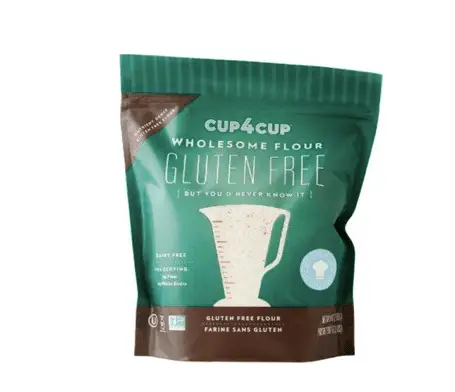
The Cup4Cup Gluten Free Wholesome Flour provides the same dough flexibility, structure, and texture as regular flour. It has a 1:1 substitution ratio as whole wheat flour in your bread-making recipes.
It is rich in fiber and omega fatty acids, incorporating highly nutritious ingredients such as brown rice flour, white rice flour, and golden flaxseeds. It also incorporates xanthan gum to provide structure and hold together the dough.
8. Best Bread Flour Brand for Rye Flour: Bob’s Red Mill Organic Dark Rye Flour
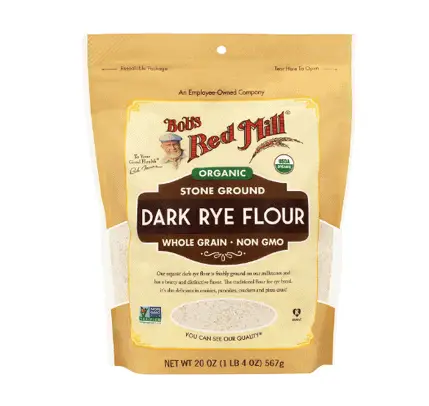
The Bob’s Red Mill Organic Dark Rye Flour is an excellent option for rye flour for your baking needs. It is mixed with other flours for a well-balanced flavor and texture. It is a certified organic flour by QAI, kosher, and Non-GMO. It is an excellent source of iron and fiber.
How to Choose the Best Bread Flour Brand
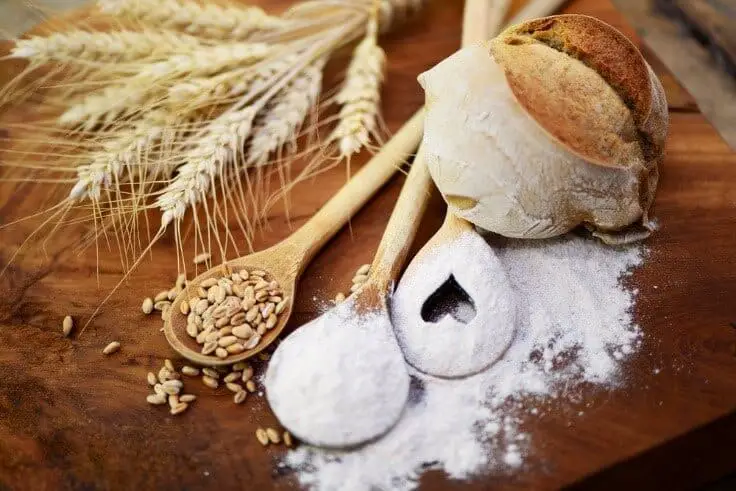
Types of Bread Flour
There are different types of flour for bread making. Wheat is the most commonly used flour ingredient, although other options include rye flour, and multigrain flour. Typically, wheat flour contains high levels of gluten. Therefore, if you are keen on gluten-free flour, consider non-wheat types.
Wheat Flour for Bread Making
There are different types of wheat flour for bread making, and the right choice depends on the flour’s characteristics and the bread you make.
Factors to Consider When Choosing Wheat Flour for Bread
Protein Content
Wheat flour is preferred for baking as it has a high protein level, which provides structure to the bread and allows it to rise. The flour’s vital wheat gluten content influences the bread’s texture. Wheat flour produces hard and chewy bread with an extremely high protein ratio of above 15%. On the other hand, a lower protein content produces softer and tender bread.
Lower protein wheat flour is recommended for light and fluffy breads such as brioche, cakes, and biscuits. For breads with an elaborate fermentation process or those with a hard crust, a higher protein content of wheat flour is preferable. For instance, whole wheat flour has higher protein content and is suitable for making crusty breads such as a baguette.
Bleached vs Unbleached Flour
White wheat flour is either bleached or unbleached. Typically, milled flours bleach and turn white over time. However, the bleaching process can take a long time. Therefore, some manufacturers use chemicals such as chlorine dioxide and benzoyl peroxide to accelerate the bleaching process.
Bleached flour is chemically processed to facilitate its aging process. It is softer and finer in texture and whiter in color. In contrast, unbleached flour is left to age naturally. It has a denser and rougher texture. Nutritionally, both types of flour have a similar profile. However, bleached flour may have a bitter, acidic taste.
Although the two types of flour can be used interchangeably in various baking recipes, bleached flour presents better gluten development. It is better suited for making cookies, waffles, and light breads. It is easier to knead and increases volume.
On the other hand, unbleached flour is great for making yeast breads as it provides a denser crumb and texture. Due to its denser nature, it is more difficult to knead, so you may need a bread machine if you make bread frequently or large batches of dough.
Quality of Flour
Some aspects to consider when determining the quality of wheat flour are the method of processing, quality of ingredients used, taste, and packaging. For instance, stone-ground flour generally has better quality than machine-grilled flour.
Also, kosher, organic, Non-GMO flour is preferable. The flour should be packed in high-quality packaging to ensure safe delivery without contamination. It should be airtight to keep moisture out and prevent mold.
Types of Wheat Flour
The most common types of wheat flour include white wheat flour, all-purpose wheat flour, whole-wheat flour, self-rising flour, organic flour, cake flour, pastry flour, etc.
White Wheat Flour vs Whole Grain Wheat Flour
White wheat flour is processed from the endosperm part of the wheat grain. It does not contain bran, germ, or kernel. On the other hand, whole wheat grain contains all three parts. In wheat grain, the endosperm is rich in protein, the germ contains fat and protein, and the bran is rich in fiber.
Whole wheat flour has a higher protein and fiber content than white wheat flour. It is also more nutritious. Due to its high protein content, whole wheat flour is denser and heavier. It is a great option for crustier breads and may be more challenging to knead.
All-Purpose Wheat Flour
All-purpose flour is refined wheat flour used for various baking recipes. It has a medium protein content of 9-12%. When using all-purpose flour, you will need a raising or leavening agent for your bread recipe.
Self-Rising Flour
Self-rising flour contains a rising agent. Like all-purpose flour, self-rising flour has mid-range protein content. It is best used for making cakes and other pastries. When baking leavened bread, the leavening agent is used more sparingly than if you used all-purpose flour. If you add too much yeast to your recipe, it inhibits proper gluten development.
Some manufacturers also specify their types of flour as cake flour, pastry flour, or bread flour.
- Cake flour is mainly designed for use in baking cakes. It has a low protein content of about 5-8% to produce light and fluffy cakes.
- Bread flour is particularly produced for making yeast breads and pizza dough. It has a high protein content of 11-13%. It is not suitable for making lighter breads and cookies.
- Pastry flour has a finer texture than all-purpose flour. Like cake flour, it has a low protein content and is best suited for making pie crusts and pound cakes.
Spelt Flour
Spelt flour is a wheat flour made from a special type of wheat grain. It can be in the form of whole grain or white spelt flour. Whole grain spelt flour is similar to the standard whole grain wheat flour. It has a heavier and coarser texture, while white spelt flour is a great option for all-purpose flour.
The flour has a nuttier flavor and a sweeter taste. It has a similar nutrition profile as regular wheat flour with slightly higher nutrient content. However, it is prone to over-processing, leading to a crumbly texture. It is best suited for making quick breads, such as beer bread, banana bread, cornbread, soda bread, pancakes, muffins, etc.
Multigrain Bread Flour
Multigrain bread flour consists of several grains. Most have 2 or more grains, including wheat, rye, oats, barley, flax, and brown rice, among others. They may also contain seeds such as flaxseeds, quinoa, and buckwheat. The grains are ground whole, including the kernels. This type of flour is dense and heavy. It has a complex flavor and texture.
Rye Flour
Rye flour is mainly used for making rye bread. It has a distinct, intense flavor. As such, some people prefer to swap half of the portion of the recommended amount in a recipe with a different type of flour, such as all-purpose flour, to tone down the intense taste of the bread.
Rye flour is not gluten-free. It contains a type of gluten protein known as celican. It has a higher nutrient range than wheat flour and more yeasts. However, its gluten content is much lower than that of wheat.
Types of Gluten-Free Bread Flour
If you want to make gluten-free bread, here is a wide range of flours you can use, including:
- Buckwheat flour
- Almond flour
- Coconut flour
- Millet flour
- Brown rice flour
- Corn flour
- Millet flour
- Oat flour
- Teff flour
- Quinoa flour
- Amaranth flour
Best Bread Flour Brand: SOLVED
The type and brand of flour will affect if you make delicious bread or not. Factors such as the type of flour, its protein content, if it is a blend, method of milling, etc., determine the performance of the bread when kneading and baking.
Above are our top 8 picks for the best bread flour for different categories. The best National brands include King Arthur, White Lily, Great River Organic, Bob’s Redmill, and Gold Medal, among others.
